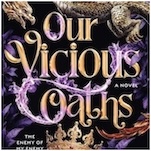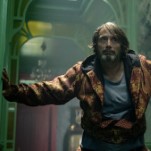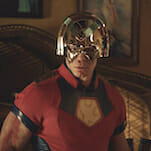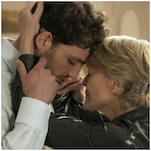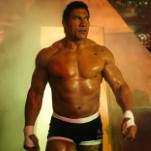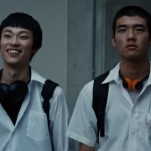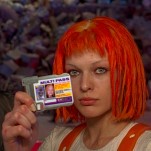The 20 Best Animated TV Shows on Netflix
Animation is not just for kids!
Photos Courtesy of Netflix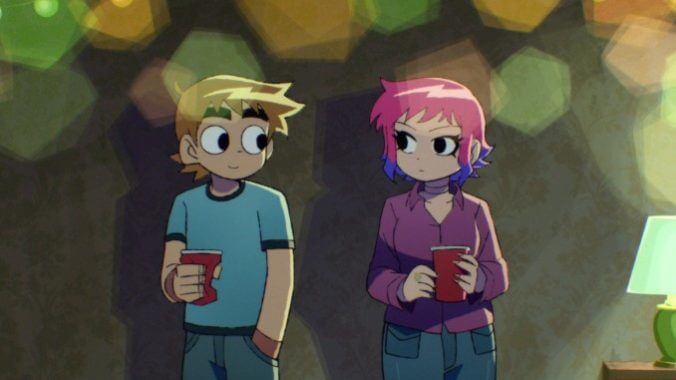
Netflix has changed rapidly as a platform over the last several years, but it’s never been quite as obvious as it is in the animation space. Beloved back-catalogue shows like Futurama and Family Guy are long gone from the streaming service, which means that Netflix originals, such as Castlevania, have become a larger proportion of the library. As we reviewed the best animated series currently available, we decided it’s only fair to consider anime series under the “animated TV shows” umbrella, and it has had an impact on our list. (Speaking of, be sure to check out our dedicated list of the best anime series on Netflix, as well as our list of the best TV shows on Netflix overall.) So, whether you’re in the mood for a Japanese import, a dark adult comedy, or something you can watch with your kids, Paste has you covered.
Here are the 20 best animated TV shows on Netflix:

20. Big Mouth
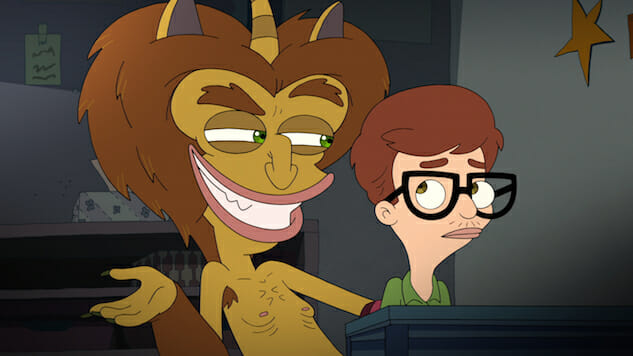
Netflix’s puberty-focused animated series, from creators Nick Kroll, Andrew Goldberg, Jennifer Flackett, and Mark Levin, follows four friends through the earliest stages of that difficult time of life: Andrew (John Mulaney) sports inconvenient erections; Nick (Kroll) awaits his first pubic hairs; Jessi (Jessi Klein) begins menstruating at the Statue of Liberty; Jay (Jason Mantzoukas) conceives rococo ways to get off with his pillow. It’s wickedly bawdy (one episode’s end credits roll over an extended description of Andrew’s dad’s testicles) and devilishly funny (another uses a note-perfect Seinfeld send-up to explain the blowjob “head push” and the term “mons pubis”). But as implied by its theme song, Charles Bradley’s “Changes,” the series is sweeter than it appears at first blush. Its goal is to cut through the humiliations of sex, to break through the shame shellacked atop our “gross little dirtbag” selves to reveal the perfectly normal yearning underneath: for pleasure, for touch, for emotional connection; for approval, confidence, intimacy, love. By admitting, as Andrew does in the series premiere, that “everything is so embarrassing”—and not only for teens—Big Mouth squares a space in which there’s no question that can’t be asked, and no answer that applies the same way to everyone. It’s the streaming version of your sex-ed teacher’s anonymous slips of paper, except the laughs aren’t sniggers—they’re hard-won, empathic guffaws. —Matt Brennan
19. Trollhunters
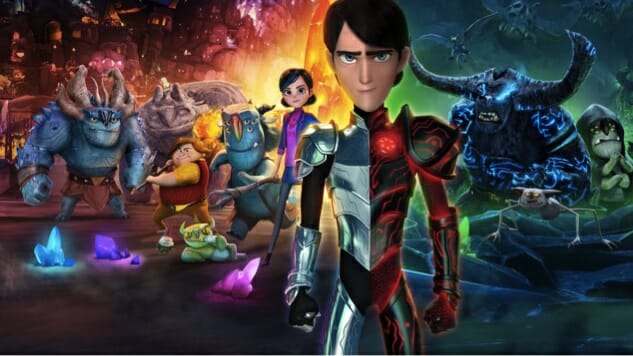
This acclaimed adventure story features one of the final performances of the late Anton Yelchin, who left behind a wealth of recorded material before his tragic passing in 2016. Yelchin voices a young man who is chosen to be the Trollhunter, a magical hero who fights against evil trolls and protects the world. The series is the brainchild of Guillermo del Toro (Hellboy) and Marc Guggenheim (Arrow), so it comes from an excellent pedigree for its sci-fi tales. The series is a bright, high-stakes adventure with gorgeous animation, well-rounded characters, and more than enough action to keep kids and adults engaged. —Trent Moore
18. The Last Kids on Earth
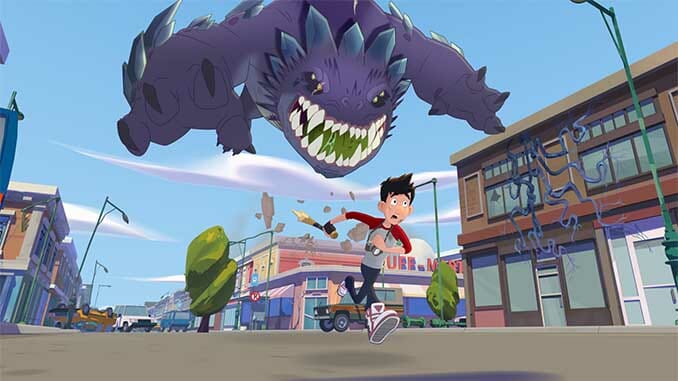
Based on Max Brallier’s book series of the same name, this animated series is the post-apocalyptic story for teens who aren’t into the realism of The Walking Dead but appreciate mayhem, monsters, and comedy. With three seasons and a special available to binge all at once, The Last Kids on Earth leans into the absurd and the idea of absurdist found family. The animation style is crisp and illustrative, which lends itself well to the show’s creative monster creations. The visuals are all about the laughs and not the gore, but the show still has stakes that are surprisingly effective and propulsive. —Tara Bennett
17. Masters of the Universe: Revelation
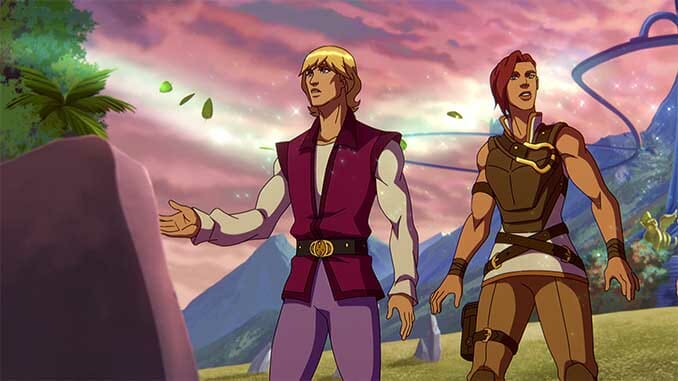
Kevin Smith continues the narrative of Filmation’s classic ‘80s animated series He-Man and the Masters of the Universe in this series that elevates Teela (Sarah Michelle Gellar) to her own hero’s journey as she has to save her best friend, Adam (Chris Wood), and Eternia itself from the amped-up machinations of Skeletor (Mark Hamill). All the familiar He-Man characters are back, voiced by an incredible lineup of A-list actors embodying the classic characters as they embark on very unexpected arcs. —Tara Bennett
16. Delicious in Dungeon
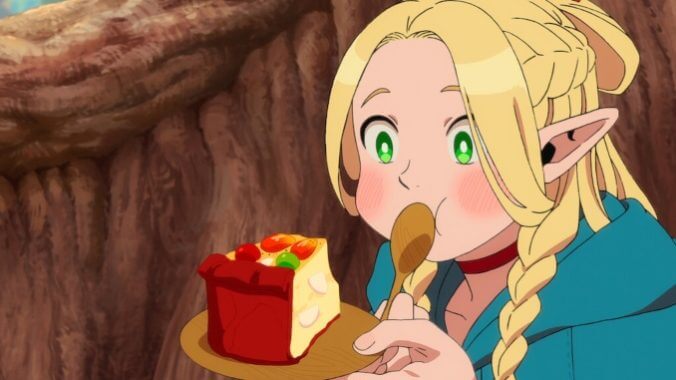
Considering the abundance of fantasy anime these days, it’s always nice when one has a novel angle, and Delicious in Dungeon’s obsession with cuisine fits the bill. We follow Laois, Marcille, and Chilchuck, three adventurers who resort to cooking dungeon monsters so they can quickly return to the depths and save their companion Falin, who is in danger of being digested by a dragon that swallowed her whole. But despite this seemingly grave premise, the series has a chill vibe, mostly focusing on delicious meals and the hijinks that ensue from their preparation. Studio Trigger’s mouth-watering animation and sharp visual comedy help make each of these dishes appropriately tasty (or alarming), turning this quest into a food travelogue that savors the small details.
And when our crew meets Senshi, a dwarf who’s dedicated his existence to tasting subterranean delicacies, it fully clicks how this fantasy milieu overlaps with cooking: both often rely on an avalanche of factoids about flora and fauna, and the series revels in its tantalizing food lore without feeling over-indulgent. But perhaps what surprised me the most is how these many methodically concocted dinners slowly endear us to this group of adventurers, using the time spent preparing and eating these entrées to fill more than just bellies. It all makes for a story that provides a nice spread of varying genres and tones, offering a fresh spin on stale fantasy tropes in the process. —Elijah Gonzalez
15. Love, Death & Robots
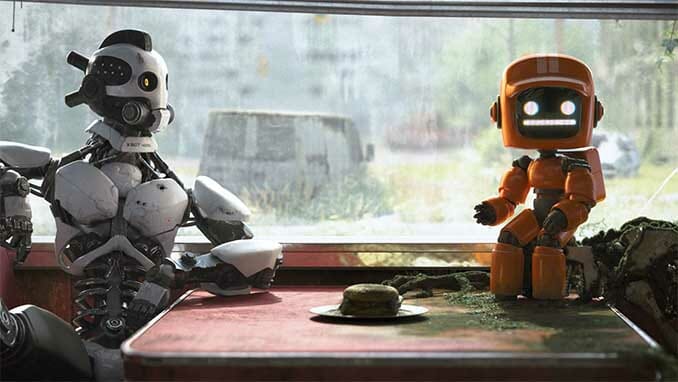
The brainchild of Tim Miller (Deadpool) and David Fincher (Zodiac), Love, Death & Robots is the experimental playground of contemporary adult animation. An anthology series that curates self-contained stories from animators around the world, it showcases an array of animation styles and techniques from 3D to stop-animation. While Season 1 leans more into sexualized stereotypes and tropes, Season 2 gets more existential and features an impressive sampler of the best in the field. With no content guardrails, this series is a fascinating overview of what incredible artists around the world are doing in the medium when given a budget and resources to let their creativity soar. —Tara Bennett
14. Inside Job
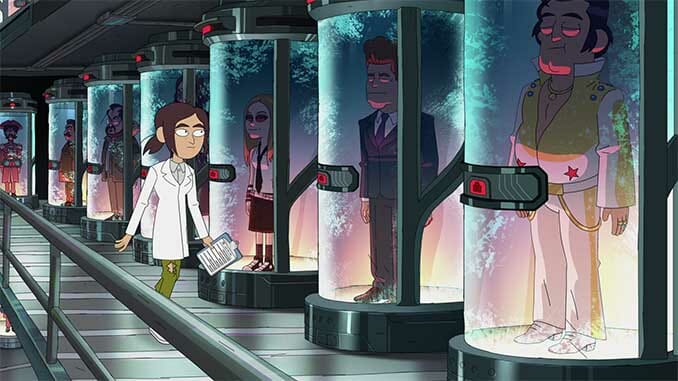
Created by Shion Takeuchi, Inside Job is the manic outcome if you fused together Futurama and The X-Files. A workplace comedy set inside the murky depths of the Deep State, Cognito, Inc. is the place where all of the wackiest conspiracy theories and government secrets are born and then pushed out into the world. Reagan Ridley (Lizzy Caplan) is the daughter of one of the co-founders, and she’s trying to find her niche in the conspiracy theory corporate ladder. A biting satire that comes at you a million miles a minute, Inside Job is subversive, hilarious, and kinda scary all at the same time. —Tara Bennett
13. Maya and the Three
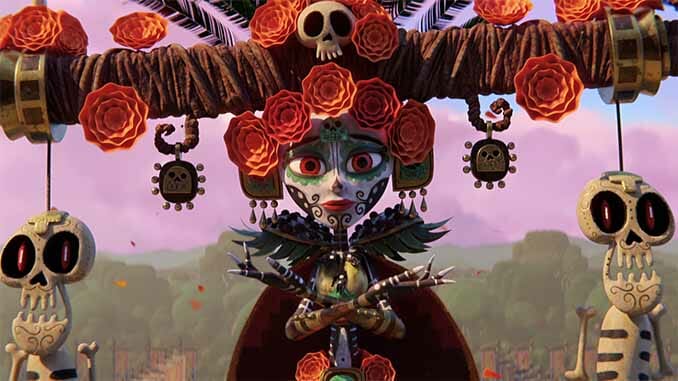
The creation of Jorge R. Gutiérrez (The Book of Life), Maya and the Three is a period piece that makes the Indigenous cultures of Mesoamerica the heroes of their story. On her 15th birthday, Princess Maya (Zoe Saldana) is tasked by the underworld gods to right the sins of her family by fulfilling a prophecy to save humanity. Gorgeously animated in the color palette and styles of the Indigenous cultures of the Mesoamerican era, the miniseries serves up a brave, funny, and unique female hero who is very different from the Disney princesses out there. —Tara Bennett
12. Inuyasha
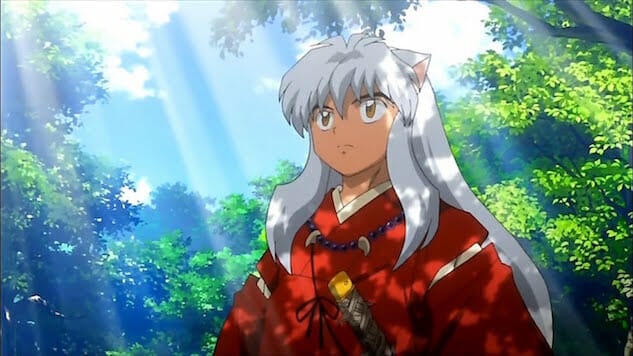
For me, Inuyasha is a marker of simpler times, when all an anime needed was fun battles, hilarious dialogue, and that melodramatic ‘90s style. This was the Demon Slayer we had before we loved ourselves, the show we’d stay up way past curfew to watch back-to-back on Adult Swim (often in non-sequential order, not that it matters all too much with Inuyasha’s long arcs and oodles of filler). The show surprisingly holds up and makes for a great group watch, practically a hotbed for drinking games: take a shot every time Kagome and Inuyasha scream each other’s names, take a shot every time a beautiful woman turns out to be a grotesque buglike demon, take a shot every time Inuyasha fundamentally misunderstands how to behave like a respectful human. With right at 200 episodes and a whopping 4 feature length films, it’s a great show to keep you busy and an easy one to dip in and out of. —Austin Jones
11. Kipo and the Age of Wonderbeasts
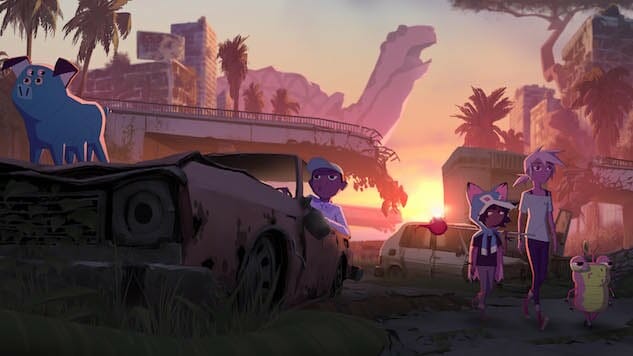
One of the few post-apocalyptic series that doesn’t take itself so seriously, Kipo and the Age of Wonderbeasts is a brilliant mélange of all things strange and wonderful. It’s got an admirable and funny female lead in Kipo, and an ensemble of lovable weirdos including a girl raised by wolves, a mutant insect constantly regenerating, and a pig with six legs and four eyes. There is also amazing representation across the board, which in turn earned the show a GLAAD Award, and is a place for kids to see themselves as having a place in a world of many “others.” Plus, the show has a banging soundtrack that is beyond anything you’d expect from an animated kid’s show; a treat for kids who are musically-minded. —Tara Bennett
10. Jurassic World: Camp Cretaceous
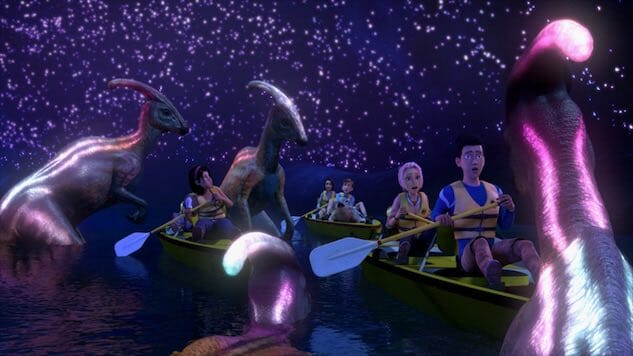
This animated series leans towards tweens and teens who can handle the tension and scares of a theatrical Jurassic Park or Jurassic World movie. As an Amblin Entertainment project, the show includes Steven Spielberg as an executive producer, which means that its narrative ties directly into the events on Isla Nublar in Jurassic World and Jurassic World: Fallen Kingdom. And the series also isn’t worried about how kids will process some of the more intense dinosaur scares. Focusing on a group of teens who win the opportunity to be the first campers at Jurassic World’s Camp Cretaceous, the concept is painted as a once-in-a-lifetime opportunity to stay at a dream archeology and paleontology adventure camp. But things quickly go awry. The six disparate kids are eventually left to survive on their own, and they’re written to be relatable to today’s tech savvy viewers. But there’s also a healthy respect for smarts, ingenuity and empathy, especially from Darius Bowman (Paul-Mikél Williams), who becomes the de facto leader as the island falls apart around them. —Tara Bennett
9. Tuca & Bertie
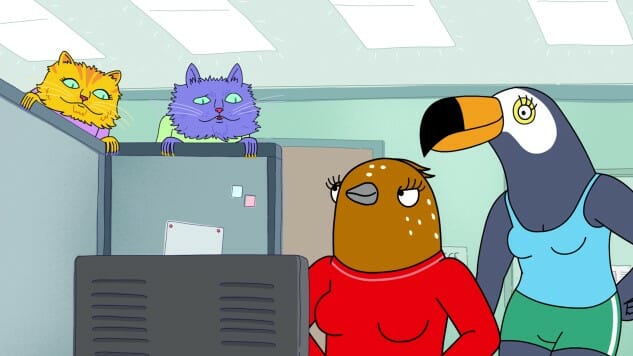
Don’t let the similar art fool you: Lisa Hanawalt’s Tuca & Bertie doesn’t have much else in common with Bojack Horseman. (I mean, that’s just the way Hanawalt draws.) Netflix’s new cartoon looks at the stresses and joys of being a woman today, from lack of respect in the workplace to balancing romance with friendships, but in an absurd reflection of our real world full of talking humanoid animals. Tiffany Haddish and Ali Wong voice the adventurous toucan and repressed songbird of the title, respectively, and between their great performances and the nuanced writing of Hanawalt and her team, Tuca & Bertie reveals a keen understanding of life without struggling to seem profound. Also, it’s packed so full of sight gags and background jokes that you’ll probably keep your finger on the rewind button the whole time. —Garrett Martin
8. Aggretsuko
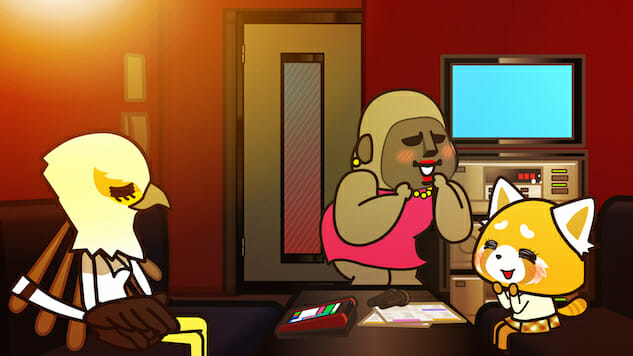
To many viewers, nothing says “anime” quite like small, adorable animals with big ol’ eyes. And Rareko, the director who has helmed a series of Japanese animated shorts called Aggretsuko since 2016 and launched a Western remake as a Netflix “original series” clearly knew this just enough to turn that assumption on its head. Retsuko, a 25-year-old anthropomorphic red panda working as a dead-eyed accountant at a trading firm, is the star of this workplace musical comedy, which quietly showcases the righteous power of a woman’s anger. Not so quietly, actually, as the musical numbers come from Retsuko’s nightly venting sessions at her local karaoke bar, where she shrieks out her frustration by singing, and screaming, death metal. This show truly does something new, and delivers a satisfying, character-driven narrative to boot. —John Maher
7. Scott Pilgrim Takes Off
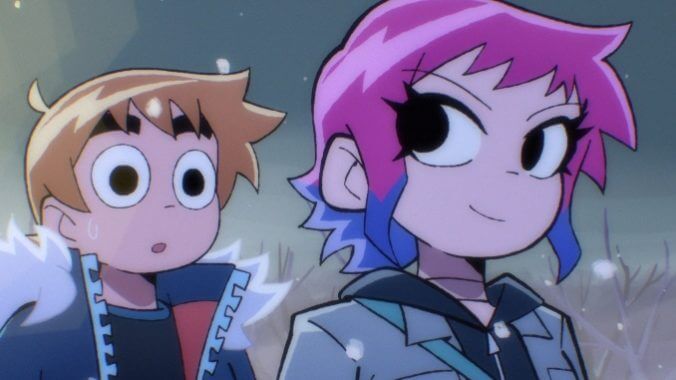
Despite what the marketing suggests, Scott Pilgrim Takes Off is not a shot-for-shot remake, but a meta reimagining of Scott Pilgrim vs. the World that tells a (mostly) new story. The result is a delightful animated series that approaches this narrative from a new perspective. Following the movie’s plot throughout the first episode (Scott Pilgrim [Michael Cera] must defeat Ramona Flowers’ [Mary Elizabeth Winstead] seven evil exes before he can date her), it doesn’t take long until Scott Pilgrim Takes Off deviates from the established plot. The main difference here is that in this rendition, we largely follow Ramona as she confronts her previous significant others and tries to piece together why events have gone off course. It synthesizes a transmedia whirlwind as it brings back the movie’s cast and evokes the comic’s art style through creative bursts of animation. Most importantly, it retains the underlying tone and messaging of what came before as it successfully reenvisions this story with Ramona at center stage. In the end, it manages to do something tricky, transposing a more than decade-old tune while barely missing a beat. —Elijah Gonzalez
6. She-Ra and the Princesses of Power
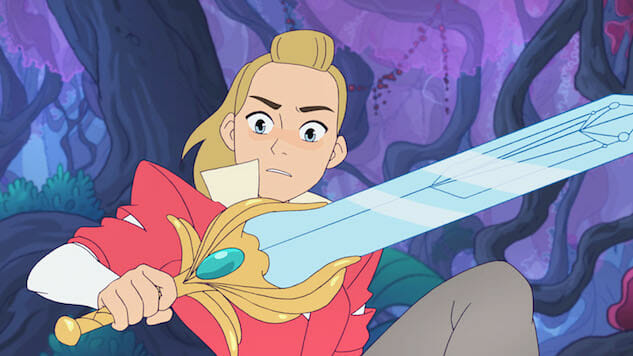
The original She-Ra: Princess of Power of the 1980s may have flipped the gender ratio on cartoons of its time, but it didn’t exactly change the world. It was still a toy tie-in show, and when the merchandise didn’t sell, She-Ra got the ax. That history is partly what makes the revival so special. Showrunner Noelle Stevenson took the elements that made She-Ra great—butt-kicking girl power, an LGBTQ subtext, and deep female relationships—into the 21st century with all the resources of DreamWorks and Netflix. She-Ra and the Princesses of Power is a beautifully animated, thematically confident product that’s as willing to tackle action set pieces as it is the dark conflicts of its characters’ upbringings and heroic destinies. The revival hasn’t changed the real world yet, either, but it’s given us plenty of fascinating, flawed, badass ladies to appreciate. —Eric Vilas-Boas
5. Blue Eye Samurai
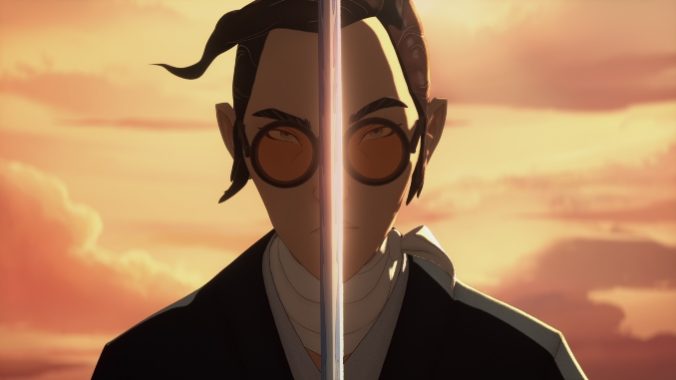
Michael Green and Amber Noizumi’s Blue Eye Samurai is a finely honed delight. Sporting action sequences that drip with the blood-splattering flourishes of old-school chanbara films, Blue Spirit delivers some of the most striking fight scenes in recent memory through graceful animation and abundant use of color. However, as we learn more about why these battles are being fought, the series also invites plenty of interesting questions about this gory journey. The story follows Mizu, a wandering warrior on a quest for revenge. But instead of pining after comeuppance for a deceased loved one like most tales in this style, Mizu is motivated by a far more fraught motivation: they were born a blue-eyed mixed-race girl in an Edo-era Japan, where those of non-Japanese descent were treated as less than human. Resolved to kill their white father for bringing them into this world as a “monster,” Mizu trains to become an unparalleled swordmaster.
The series doesn’t hold back, and while the violence we witness on this trek is plenty grisly, perhaps the most brutal element is watching our protagonist literally and figuratively tear themself apart over internalized discrimination and misogynistic expectations. Along the way, they meet other nuanced characters who similarly face the brunt of social stigmas, causing Mizu to at least marginally inch towards embracing who they are, or at least towards the potential good they can do. On top of being one of the best action shows of the year, Blue Eye Samurai’s portrayal of this time period cuts deep. —Elijah Gonzalez
4. Castlevania
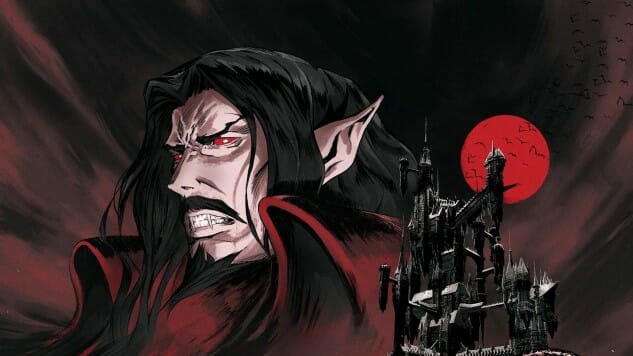
We at Paste have argued that Netflix’s Castlevania became “the best videogame adaptation ever made” in its second season, but even that is fainter praise than the show deserves. After all, videogames have hardly translated to film or television with any success, leaving utter mediocrity as Castlevania’s knee-high bar to clear. Let that not take away from how high it flies. Adapted from the Konami franchise of the same name by award-winning comic book writer Warren Ellis, directed by Sam Deats and animated by the aptly named Powerhouse Animation Studios, the anime-style series is a bloody delight, a Gothic orchestra that both honors and deepens Castlevania’s dark world. The show patiently establish motivations and stakes, building slowly but surely to a gloriously explosive payoff. At the heart of it all is a tortured Dracula (Graham McTavish), who is the best kind of villain: one with a point. —Scott Russell
3. BoJack Horseman
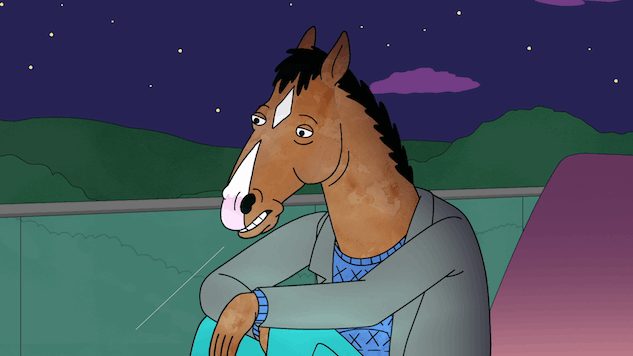
That BoJack Horseman manages to pinpoint the character of the zeitgeist and map a few of the ways through it is at the heart of its profound genius, always slipping, almost imperceptibly, from silver-tongued satire to pathos and back. The series doesn’t forgive the cruelties of washed-up, alcoholic actor BoJack Horseman (Will Arnett)—or anyone else’s—so much as suggest that cruelties are now our dominant form of currency, the payola that secures the White House for the wicked and Wall Street for the damned, the surest path to fame and fortune for the tiny few and destitution for the many. In BoJack, the backdrop to the characters’ familiar foibles—their unthinking insults, their unspoken apologies, their selfish choices, self-doubt, self-flagellation—is the even more familiar crassness of lobbyists, donors and campaign managers; of studio heads, ambitious agents, stars on the make; of cable news anchors, dimwitted columnists, “Ryan Seacrest types”; of a social order so inured to insincerity, whataboutism, political profiteering, environmental collapse that being kicked in the stomach starts to feel like a gift. In short, BoJack Horseman is the defining series of our time, and also a handbook for surviving it. —Matt Brennan
2. Arcane
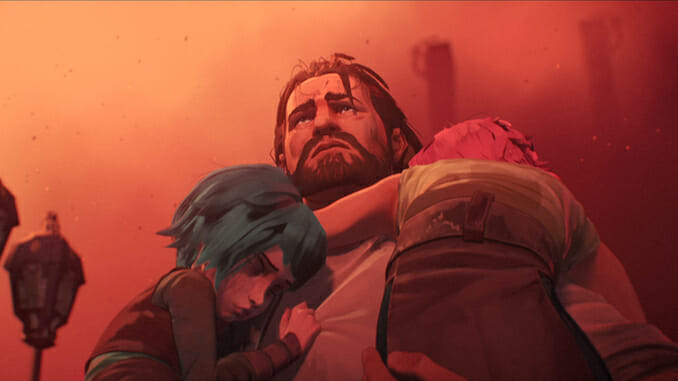
Netflix and RiotGame’s Arcane, based on the decade-old League of Legends multiplayer online battle arena game, is a revelation. Stunningly crafted in a mix of 2D and 3D by French animation studio Fortiche Productions, Arcane is created and showrun by League videogame architects Christian Linke and Alex Yee. For 10 years, the duo and their studio have cultivated a passionate and massively dedicated community of 8 million players who have immersed themselves in the games, tie-in comics, and music videos that make up the complex mythology of the world. But as so many videogame-to-movie adaptations have proved, even hit games have a rough time translating to a new medium. It’s the perpetual challenge for even the best creatives: finding the right balance of fan service while engaging non-gamer audiences.
Not unlike other heavy world-building series like Game of Thrones or Shadow and Bone, Arcane mostly concerns itself with political and familial conflicts in a world where magic exists. If you happen to be a gamer, the art deco-meets-steampunk aesthetics of Piltover and Zaun will immediately draw parallels to the lauded Bioshock games. If you’re not, it doesn’t matter because a huge part of the appeal of the series is getting lost in how visually immersive every frame of this show is. The textures, lighting, and color palettes—dank and neon in the under city, which juxtaposes against the more pastel and metallic topside—are a feast for the eyes.
Even if you have no interest in picking up any kind of gaming console, do yourself a favor and give Arcane a try. It has more mature storytelling and emotional resonance than many live-action shows do right now. And it deserves to be lauded as the new benchmark for what can be done when it comes to successfully translating worthy videogame universes into a different medium while refusing to dumb down or simplify complex storytelling. Arcane is a world worth getting lost within. —Tara Bennett
1. Avatar: The Last Airbender
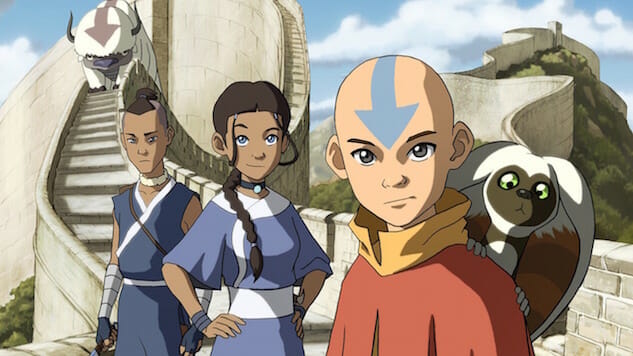
Don’t be put off by M. Night Shayamalan’s clunky 2010 live-action adaptation. This richly animated TV series merges the wild imagination of Hayao Miyazaki, the world-building of the most epic anime stories, and the humor of some of the more offbeat Cartoon Network originals. Following the exploits of the Avatar, the boy savior Aang who can control all four of the elements—fire, water, earth and wind—the series is filled with political intrigue, personal growth, and unending challenges. Spirits and strange hybrid animals present dangers, but so do the people who seek power for themselves. This is one you’ll enjoy watching with your kids or on your own. —Josh Jackson
For all the latest TV news, reviews, lists and features, follow @Paste_TV.
























